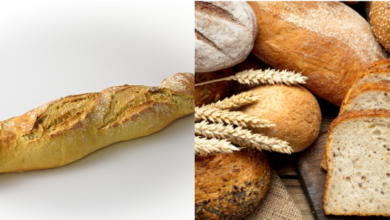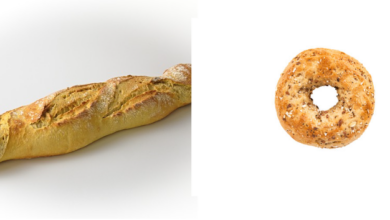Do You Know When Your Baguette is Done?

What To Know
- In this comprehensive guide, we’ll explore the various methods for determining when your baguette is ready, ensuring a golden crust and a soft, airy interior every time.
- By following these steps, you’ll be able to create a baguette with a golden crust, a soft and airy interior, and a flavor that will delight your taste buds.
- However, a baking stone or baking sheet preheated to a high temperature is recommended for a crispy crust.
Baking a perfect baguette is an art form that requires precision, timing, and a keen eye for detail. Whether you’re a seasoned baker or just starting, knowing when your baguette is done can be tricky. There are several signs to look for that indicate the perfect moment to take it out of the oven. In this comprehensive guide, we’ll explore the various methods for determining when your baguette is ready, ensuring a golden crust and a soft, airy interior every time.
1.Visual Inspection:
One of the most straightforward ways to check if your baguette is done is through visual inspection. Look for the following signs:
- Golden Brown Crust: The crust should have a beautiful golden brown color. Avoid letting it get too dark, as this can indicate overbaking.
- Shiny Surface: The surface of the baguette should have a slight shine, indicating a crispy crust.
- Even Color: The color should be consistent throughout the baguette, without any uneven patches.
2.Tapping Test:
The tapping test is a simple yet effective method for checking the doneness of your baguette.
- Tap the Crust: Lightly tap the crust with your finger. If it sounds hollow, the baguette is likely done. A dull sound indicates that it needs more baking time.
3.Internal Temperature:
Using a digital thermometer is the most accurate way to determine the internal temperature of your baguette.
- Insert Thermometer: Insert the thermometer into the center of the baguette.
- Target Temperature: Aim for an internal temperature between 190°F (88°C) and 200°F (93°C).
4.Crust Resistance:
The crust of a well-baked baguette should have a slight resistance when gently pressed.
- Press the Crust: Gently press the crust with your finger. If it springs back quickly, the baguette is done. If it leaves an indentation, it needs more baking time.
5.Steam Release:
During the baking process, baguettes release steam. Pay attention to these signs:
- Steam Vents: Look for small steam vents on the surface of the baguette. These indicate that the baguette is releasing moisture and is close to being done.
- Reduced Steaming: As the baguette bakes, the amount of steam released will decrease. When the steaming stops, it’s a good indication that the baguette is done.
6.Baking Time:
While baking times can vary depending on the recipe and oven, here’s a general guideline:
- Baking Duration: Baguettes typically take about 20-30 minutes to bake in a preheated oven at 450°F (230°C).
- Keep an Eye on the Baguette: Start checking the baguette for doneness a few minutes before the recommended baking time is complete.
7.Resting Period:
Once you’ve taken the baguette out of the oven, let it rest for a few minutes before slicing and serving.
- Cooling Time: Allow the baguette to cool slightly on a wire rack. This helps the crust set and prevents the baguette from becoming soggy.
Perfect Finish:
Achieving the perfect baguette is a combination of art and science. By following these steps, you’ll be able to create a baguette with a golden crust, a soft and airy interior, and a flavor that will delight your taste buds.
Quick Answers to Your FAQs
1. Q: How do I avoid overbaking my baguette?
A: Keep a close eye on the baguette during baking. Overbaking can result in a dry, tough crust and a dense interior.
2. Q: Can I use a different type of thermometer to check the internal temperature?
A: Yes, you can use an instant-read thermometer or a meat thermometer. Ensure it’s calibrated correctly for accurate readings.
3. Q: Why does my baguette have a soggy bottom?
A: This can happen if the baguette is not baked on a hot enough baking sheet or if the oven temperature is too low.
4. Q: Can I bake baguettes in a regular oven?
A: Yes, you can bake baguettes in a regular oven. However, a baking stone or baking sheet preheated to a high temperature is recommended for a crispy crust.
5. Q: How do I store leftover baguettes?
A: Store leftover baguettes in an airtight container at room temperature for up to 3 days. You can also freeze them for longer storage.
With a bit of practice and attention to detail, you’ll be able to master the art of baking baguettes and impress your friends and family with your culinary skills. Happy baking!





